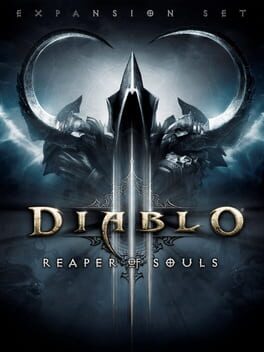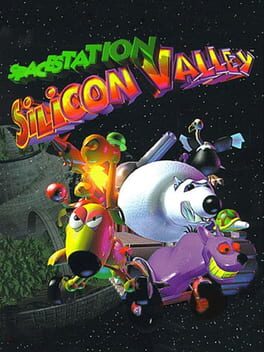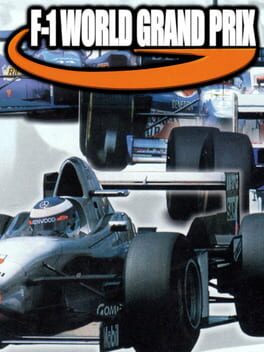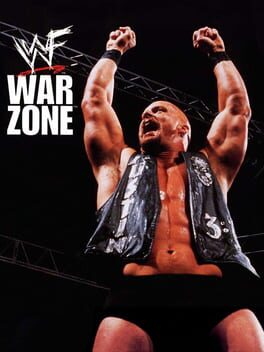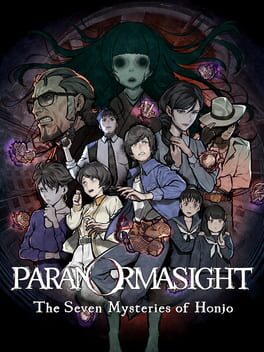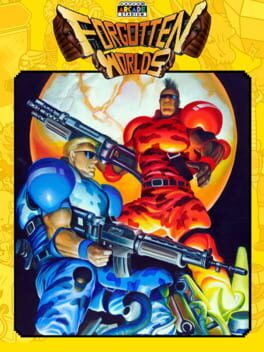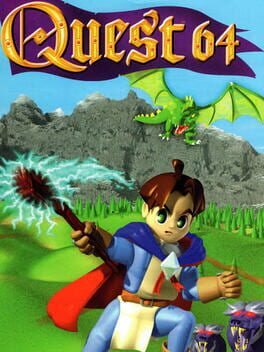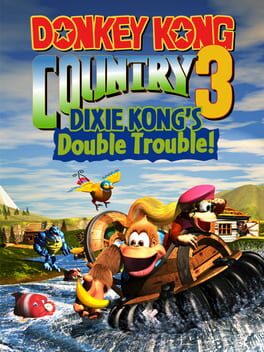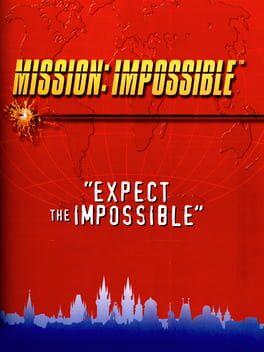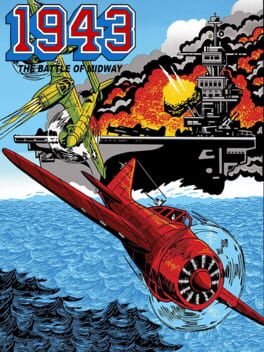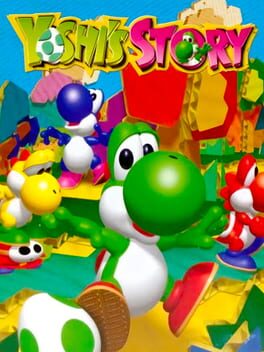SNESmapper
BACKER
Diablo III is the first Diablo game where I invested a decent amount of hours, replaying it multiple times in different ways (solo, with friends, and with others via online coop). The game's success comes from its addicting gameplay combining a solid combat system (offering variety depending on the build of your character) with the typical Diablo staple of dungeon hunting and loot mechanics. The fun is accentuated when friends join you (and/or random players online).
Graphics, performance, and overall art direction and atmosphere were great in this game and kept things interesting. I thought the story and lore were also interesting and kept things moving forward throughout the main campaign which feels like it's very short (time flies when you are having fun).
All in all, I think this game was able to overcome some early bugs and criticisms and turned into a fun adventure for player looking for a solo or coop experience.
Graphics, performance, and overall art direction and atmosphere were great in this game and kept things interesting. I thought the story and lore were also interesting and kept things moving forward throughout the main campaign which feels like it's very short (time flies when you are having fun).
All in all, I think this game was able to overcome some early bugs and criticisms and turned into a fun adventure for player looking for a solo or coop experience.
1998
Gex: Enter the Gecko was a decent 3D-platformer with a lot of personality thank to the extensive number of voice lines that add humor and character as you play the game.
Levels are TV/Movie theme-based and Gex wears different costumes depending on said themes. The controls and platforming are nothing extraordinary, your character can jump to progress throughout the levels and attack enemies with a different set of moves. Level design varies in terms of quality and fun but overall this is a decent platformer of its time that unfortunately never had the time to beat/complete.
Levels are TV/Movie theme-based and Gex wears different costumes depending on said themes. The controls and platforming are nothing extraordinary, your character can jump to progress throughout the levels and attack enemies with a different set of moves. Level design varies in terms of quality and fun but overall this is a decent platformer of its time that unfortunately never had the time to beat/complete.
Space Station Silicon Valley built a reputation of being a surprising hit game with very positive reviews back in the day. This prompted me to rent the game and check what the fuzz was all about but truthfully the game never really clicked with me.
For the time, it had some interesting concepts and ideas setup with a mission based 3D-Environment. What held this back for me personally were some of the cryptic puzzles, game bugs, and frustrating control at times (depending on the animal/robot you were in control).
For the time, it had some interesting concepts and ideas setup with a mission based 3D-Environment. What held this back for me personally were some of the cryptic puzzles, game bugs, and frustrating control at times (depending on the animal/robot you were in control).
1998
A major improvement in terms of presentation when compared to F1 Pole Position which was released not too long before.
Despite the easy-to-spot improvements on all fronts, I still hold F1 Pole Position as my favorite F1 N64 game just because of what it represented at the time of its release. Nevertheless, World Grand Prix was at the time the best F1 game you could get, featuring updated rosters, teams, and car liveries.
Despite the easy-to-spot improvements on all fronts, I still hold F1 Pole Position as my favorite F1 N64 game just because of what it represented at the time of its release. Nevertheless, World Grand Prix was at the time the best F1 game you could get, featuring updated rosters, teams, and car liveries.
1998
Compared to the AKI wrestling games that were already available at the time of this release, WWF War Zone was a disappointment and frankly a below-average wrestling game.
Some interesting things about this game included its create-a-wrestler mode, graphics (for its time), and the fact that it allowed WWF fans to experience their organization for the first time (in an era where WCW was the top brand and got most of the attention).
What really brings this game down are the confusing and obtuse controls. AKI studio games excelled because of how intuitive the controls were, yet this game managed to go the complete opposite way with confusing controls and move sets.
Some interesting things about this game included its create-a-wrestler mode, graphics (for its time), and the fact that it allowed WWF fans to experience their organization for the first time (in an era where WCW was the top brand and got most of the attention).
What really brings this game down are the confusing and obtuse controls. AKI studio games excelled because of how intuitive the controls were, yet this game managed to go the complete opposite way with confusing controls and move sets.
1998
This game took what Super Mario 64 brought to the table and improved on a number of things including graphics, presentation, and gameplay variety, making Banjo Kazooie one of the standout 3D platformers of its time and as a result, one of the most celebrated and highly ranked games of its genre.
Other components that made Banjo Kazooie stand out included good writing (despite the very limited dialogue within the game) that was enhanced by great character design, animations, and subtle touches such as the 'gibberish' speech sounds. Level design is superb and tied via an overworld where worlds are unlocked by the Jiggy pieces, so overall the setup is very similar to Super Mario 64. Gameplay-wise, the dynamic teaming between Banjo and Kazooie works very well and the amount of abilities they can perform provide good variety and even innovative ways of progressing through different worlds.
Banjo-Kazooie represents Rare at its 3D platforming design peak. Personally, I don't think any Rare releases after this game ever came close to this game's quality and presentation making this a must-play for any platforming and adventure game fans out there.
Other components that made Banjo Kazooie stand out included good writing (despite the very limited dialogue within the game) that was enhanced by great character design, animations, and subtle touches such as the 'gibberish' speech sounds. Level design is superb and tied via an overworld where worlds are unlocked by the Jiggy pieces, so overall the setup is very similar to Super Mario 64. Gameplay-wise, the dynamic teaming between Banjo and Kazooie works very well and the amount of abilities they can perform provide good variety and even innovative ways of progressing through different worlds.
Banjo-Kazooie represents Rare at its 3D platforming design peak. Personally, I don't think any Rare releases after this game ever came close to this game's quality and presentation making this a must-play for any platforming and adventure game fans out there.
A solid remake of the GBA that ends up adding more levels and modes to extend replay value. The core level design for the main levels remain the same but receives the graphical remake upgrade as well as cinematic animated cut-scenes that are very well done.
The way the game is set up is very interesting, inviting the player to get "perfect" scores (by collecting all gifts plus the missing Mario action figure) for the main six levels for each world to then play the Mario toy levels where the more toy Marios you have, the better and easier the DK boss fight of each world become. This setup encourages the player to do its best at each level and is very well implemented. With that being said, obtaining a "Perfect" score is not that challenging for most levels but the reward makes it worth pursuing said score. Regular levels are for the most part straightforward and not very challenging but fun to play. Only the last few worlds and corresponding levels start posing a challenge. Luckily for those seeking a challenge, the "Expert" levels open up once you beat the game as well as a TimeTrail mode.
By the time you reach the new plus and Expert levels the gameplay and overall objectives of the game start becoming a bit tiring and repetitive but it's always better to have more extra content than none at all.
The way the game is set up is very interesting, inviting the player to get "perfect" scores (by collecting all gifts plus the missing Mario action figure) for the main six levels for each world to then play the Mario toy levels where the more toy Marios you have, the better and easier the DK boss fight of each world become. This setup encourages the player to do its best at each level and is very well implemented. With that being said, obtaining a "Perfect" score is not that challenging for most levels but the reward makes it worth pursuing said score. Regular levels are for the most part straightforward and not very challenging but fun to play. Only the last few worlds and corresponding levels start posing a challenge. Luckily for those seeking a challenge, the "Expert" levels open up once you beat the game as well as a TimeTrail mode.
By the time you reach the new plus and Expert levels the gameplay and overall objectives of the game start becoming a bit tiring and repetitive but it's always better to have more extra content than none at all.
It's always hard to comment and review on story-driven games like this visual novel avoiding spoilers. Paranormasight is a well-put-together visual novel that provides a good narrative, interesting characters and plot, and an intriguing setting. The story and plot are interesting throughout the whole game and keep the player engaged in finding out more about the curses that are affecting the City and how the ultimate goal of the curses is/will be activated as well as finding out the story behind it.
Gameplay revolves around reading a lot and making decisions/asking questions to progress. Parts of the game involve a 360 panoramic view that allows the player to inspect different components within the view. There are some very clever uses of in-game files and observations that the player will have to use in order to progress through the game. The soundtrack and sound effects are very good and appropriate for the nature of the game and its setting.
All in all, this is a very solid visual novel that came out of nowhere and it's definitely worth exploring if you are a fan of the genre.
Gameplay revolves around reading a lot and making decisions/asking questions to progress. Parts of the game involve a 360 panoramic view that allows the player to inspect different components within the view. There are some very clever uses of in-game files and observations that the player will have to use in order to progress through the game. The soundtrack and sound effects are very good and appropriate for the nature of the game and its setting.
All in all, this is a very solid visual novel that came out of nowhere and it's definitely worth exploring if you are a fan of the genre.
An early take at the twin-stick shooting dynamic, Forgotten Worlds offers a lot of the features of its contemporaries including cheesy dialogue and bad translations. The story makes no sense, the protagonists are over-the-top macho dudes on a mission to save the universe and exterminate everything, and the action is well-paced, although it becomes frustratingly hard and unbearable towards the end of the game.
The sprite work in the game is great, with background and level bosses shining up high. Gameplay becomes a bit tiring since the twin-stick concept is not refined and enough to keep a good level of attention on behalf of the player.
The sprite work in the game is great, with background and level bosses shining up high. Gameplay becomes a bit tiring since the twin-stick concept is not refined and enough to keep a good level of attention on behalf of the player.
1998
While the general concensus that Quest 64 is not a good RPG may be true, its flaws stood out more than normal considering this was one of the very few jRPGs released for the Nintendo 64 and all eyes were on this game.
A lot of the game components were average such as graphics, presentation, and soundtrack but the game did shine in trying to provide fresh ideas such as having limited movement within each battle to dodge attacks. Some of the early parts of the game were laid out nicely and presented charming areas to explores such as towns.
A lot of the game components were average such as graphics, presentation, and soundtrack but the game did shine in trying to provide fresh ideas such as having limited movement within each battle to dodge attacks. Some of the early parts of the game were laid out nicely and presented charming areas to explores such as towns.
At the time of its release, NBA Courtside was easily the best N64 basketball game. Compared to the typical basketball games of its time, Courtside had a steeper learning curve as a result of its emphasis on simulation over arcade gameplay. Learning controls and movements was a bit frustrating early on but worth it once the player knew what to do since it added realism to the games.
It was interesting how Nintendo decided to go with Kobe Bryant as the face of the game/series considering he was just getting started in his NBA career. As we all know, Kobe went on to become one of the best players in NBA history so I guess Nintendo and Left Field Studios had a good foresight on Kobe's potential. Because of him being featured in this game, he became one of my favorite players to follow even though I've been an Orlando Magic fan through and through (RIP Kobe).
It was interesting how Nintendo decided to go with Kobe Bryant as the face of the game/series considering he was just getting started in his NBA career. As we all know, Kobe went on to become one of the best players in NBA history so I guess Nintendo and Left Field Studios had a good foresight on Kobe's potential. Because of him being featured in this game, he became one of my favorite players to follow even though I've been an Orlando Magic fan through and through (RIP Kobe).
DKC3 had a number of things against upon release in late 1996: the Nintendo 64 was already out, 3D games were all the buzz then, overall interest in side-scrolling platforming was very low, and this was the third entry in the DKC series (5th if the Game Boy DK Land games are counted) so there was a bit of burnout among fans of the series.
Even with so many things against it, I had a good time playing this back in the day (rented it from Blockbuster) but it was clear to me that this game was nowhere near the masterpiece levels that (IMO) DKC and DKC2 achieved earlier. DKC3 didn't really do anything wrong but at the same time it didn't really do anything new. Sure, the setting was different (focus on a northwestern forestry setting but with diverse climates and themes sprinkled throughout the worlds), new enemies and characters were introduced (beginning with Kiddy Kong), and gameplay variety between levels is probably the highest in the series, yet the game felt very familiar in a been-there-done way. Not necessarily a bad thing considering the quality of previous games but definitely not good enough to propel this game into the same level of appreciation.
Graphics, gameplay, and sound are all very familiar and based in previous games for the most part with new collectables, mascots, and some level design ideas that were fairly interesting but not mindblowing.
All in all, DKC3 is a very solid platforming game that was released perhaps a bit too late in the SNES life cycle and therefore lost the spotlight and interest that the other games carried.
Even with so many things against it, I had a good time playing this back in the day (rented it from Blockbuster) but it was clear to me that this game was nowhere near the masterpiece levels that (IMO) DKC and DKC2 achieved earlier. DKC3 didn't really do anything wrong but at the same time it didn't really do anything new. Sure, the setting was different (focus on a northwestern forestry setting but with diverse climates and themes sprinkled throughout the worlds), new enemies and characters were introduced (beginning with Kiddy Kong), and gameplay variety between levels is probably the highest in the series, yet the game felt very familiar in a been-there-done way. Not necessarily a bad thing considering the quality of previous games but definitely not good enough to propel this game into the same level of appreciation.
Graphics, gameplay, and sound are all very familiar and based in previous games for the most part with new collectables, mascots, and some level design ideas that were fairly interesting but not mindblowing.
All in all, DKC3 is a very solid platforming game that was released perhaps a bit too late in the SNES life cycle and therefore lost the spotlight and interest that the other games carried.
1998
Unfortunately for this game, GoldenEye 007 was already out by the time this came out and even though this was not a first-person shooter, it failed to even remotely match the bar that was set by GoldenEye with well-designed and smart goal-based levels.
It was obivous that the budget for this game was somewhat on the low side, featuring limited graphics, poor performance, and janky movements. With that being said, I feel like M:I offered some interesting ideas for the time such as the Embassy level (which in my opinion, it's one of the best stealth levels of its time) but the prominent factor in this game is the inconsistency in the game's quality and level design ranging from excellent (such as the aforementioned Embassy level) to poor (underground sewer level).
Overall, it's not a bad game for its time and I feel like with a better budget and perhaps more development time this could have become a product that really stood out.
It was obivous that the budget for this game was somewhat on the low side, featuring limited graphics, poor performance, and janky movements. With that being said, I feel like M:I offered some interesting ideas for the time such as the Embassy level (which in my opinion, it's one of the best stealth levels of its time) but the prominent factor in this game is the inconsistency in the game's quality and level design ranging from excellent (such as the aforementioned Embassy level) to poor (underground sewer level).
Overall, it's not a bad game for its time and I feel like with a better budget and perhaps more development time this could have become a product that really stood out.
Played this game via the Capcom Arcade Collection. Just like most arcade shooters/shmups, this is a coin muncher that gets increasingly difficult and unfair the more you progress through the game. The difficulty and frustration rely mostly not on the amount of enemy projectile (like some "bullet hell" games out there) but rather on the enemy plane speed and enemy projectile speed, making dodging enemy fire very difficult (despite very precise controls).
For being a 1987 game, the game looks very good but unfortunately the backgrounds and sprites get old very quickly. All levels (rounds) feature the same backdrop with basic water, some clouds, and sporadic small islands. Understandably, this game is about a battle in the Pacific Ocean so you would expect a lot of water backgrounds but I feel like the developers could have at least tried featuring different times of day and weather effects to add some visual variety.
Gameplay is interesting featuring a fuel meter (acting as health) that gets depleted as you get hit and as you use special powers, making the player think hard before employing the bigger 'clear screen' weapons. Bosses at the end of each round are pretty cool but get repetitive since they are variations of the same machinery.
For being a 1987 game, the game looks very good but unfortunately the backgrounds and sprites get old very quickly. All levels (rounds) feature the same backdrop with basic water, some clouds, and sporadic small islands. Understandably, this game is about a battle in the Pacific Ocean so you would expect a lot of water backgrounds but I feel like the developers could have at least tried featuring different times of day and weather effects to add some visual variety.
Gameplay is interesting featuring a fuel meter (acting as health) that gets depleted as you get hit and as you use special powers, making the player think hard before employing the bigger 'clear screen' weapons. Bosses at the end of each round are pretty cool but get repetitive since they are variations of the same machinery.
1997
An interesting game for the time offering a classic side-scrolling experience (in an era where 3D platforming was new and booming) but with different rules on how to advance levels such as eating a determined amount of fruit instead of reaching an end point/goal area.
Despite the side-scrolling view, Nintendo went with 3D graphics and that made for an interesting art direction and the game ended up looking great and was unique for its time. Soundtrack was cringey for me with too much baby Yoshi voices but there are some interesting pieces here and there.
Unfortunately, this game was on the (very) short side, definitely one of its biggest cons making this a good game to rent or borrow back in the day.
Despite the side-scrolling view, Nintendo went with 3D graphics and that made for an interesting art direction and the game ended up looking great and was unique for its time. Soundtrack was cringey for me with too much baby Yoshi voices but there are some interesting pieces here and there.
Unfortunately, this game was on the (very) short side, definitely one of its biggest cons making this a good game to rent or borrow back in the day.
